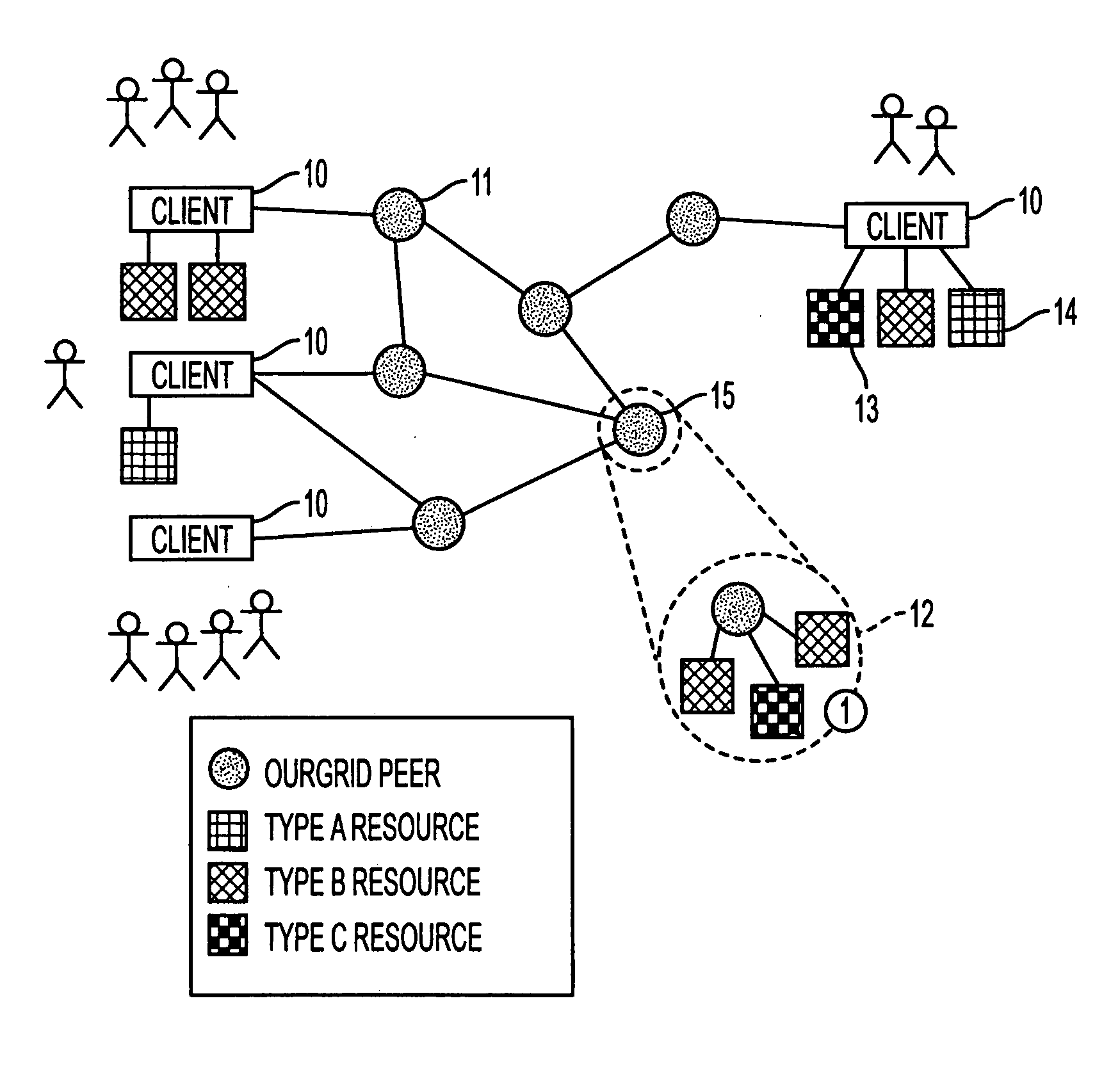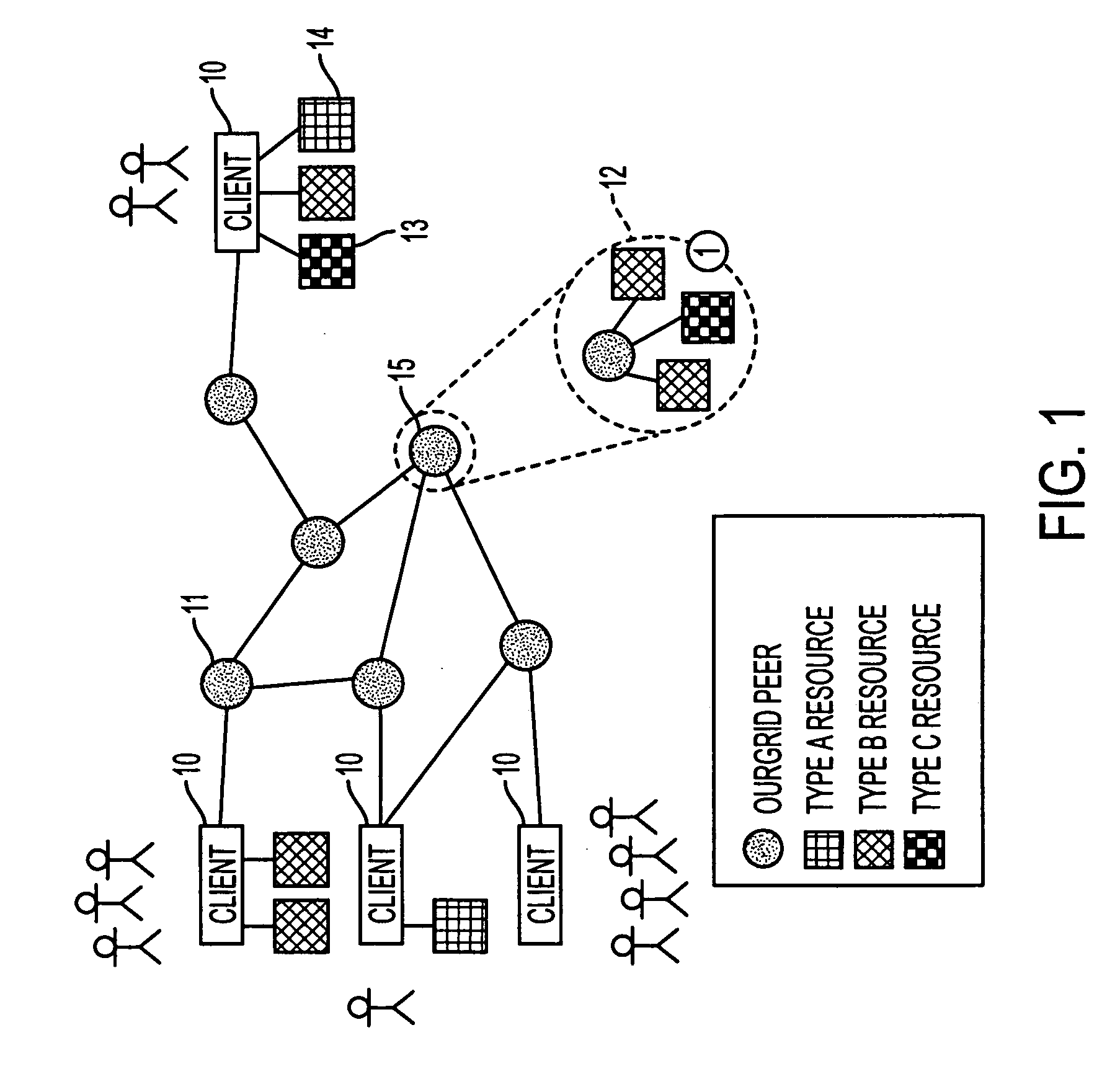Equitable resource sharing in grid-based computing environments
a resource sharing and resource technology, applied in computing, digital computers, instruments, etc., can solve problems such as inability to provide reliable user infrastructure, and inability to provide dynamic access provision
- Summary
- Abstract
- Description
- Claims
- Application Information
AI Technical Summary
Benefits of technology
Problems solved by technology
Method used
Image
Examples
Embodiment Construction
[0036] As a preliminary note, the prototype embodiment of the present invention is referred to as the “OurGrid” approach. This nomenclature will be used in the following description where appropriate.
[0037] OurGrid is based on a model of resource sharing that is intended to provide equity with a minimum of required or implied guarantees. The intention is to provide an extensible and easy to install platform particularly suitable for running a set of grid applications. It is a requirement that at least some of the participants are willing to share their resources in order to obtain access to the grid. The invention is particularly suitable for providing grid-based computing resources to a class of applications known as “bag of tasks” (BoT) applications. However this is not necessarily a limiting type of possible application. Monolithic application execution may be possible given a specifically tailored task / application scheduler.
[0038] BoT applications are parallel applications com...
PUM
 Login to View More
Login to View More Abstract
Description
Claims
Application Information
 Login to View More
Login to View More - R&D
- Intellectual Property
- Life Sciences
- Materials
- Tech Scout
- Unparalleled Data Quality
- Higher Quality Content
- 60% Fewer Hallucinations
Browse by: Latest US Patents, China's latest patents, Technical Efficacy Thesaurus, Application Domain, Technology Topic, Popular Technical Reports.
© 2025 PatSnap. All rights reserved.Legal|Privacy policy|Modern Slavery Act Transparency Statement|Sitemap|About US| Contact US: help@patsnap.com



